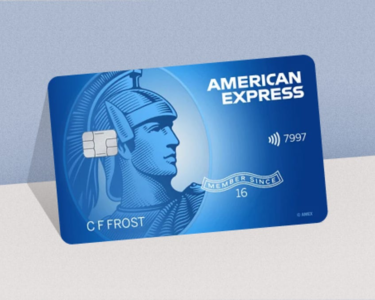6
By Alexander Jones, International Banker
According to a report by the Federal Reserve Bank of New York (New York Fed), Americans held a record-high $1.21 trillion of debt on their credit cards as of the fourth quarter (Q4) of 2024. Published on February 13, the New York Fed’s report also found that credit-card debt grew by $45 billion during Q4 and was a hefty 7.3 percent higher than a year earlier. And with the bank confirming two weeks later that credit-card delinquency rates, reflecting missed payments on credit-card bills, had reached their highest levels since at least 2011, concern is escalating that the financial securities of ordinary Americans are hurtling towards critical status.
Indeed, the past few years of skyrocketing inflation, sharply rising interest rates and monumental spikes in the cost of living have made simply “getting by” for the average US household increasingly more painful. With price surges for necessities making the likes of basic groceries and fuel impossible to afford, consumers have turned to credit cards in large numbers to make ends meet, thereby sending US credit-card debt to all-time highs in recent months.
“No one should be surprised that credit card debt hit another record high. Stubborn inflation has shrunk a lot of Americans’ financial margin for error from slim to about none, forcing people to lean more heavily on credit card debt,” Matt Schulz, chief credit analyst at LendingTree and the author of Ask Questions, Save Money, Make More: How to Take Control of Your Financial Life, told CNBC following the release of the New York Fed report. “There’s very little reason to believe that we won’t continue to see new credit card debt records being set going forward.”
“Even if headlines suggest inflation is cooling, everyday Americans are still feeling its full weight at home,” according to Howard Dvorkin, chairman of Debt.com, a Florida-based debt-relief firm. Its recent survey of 1,000 American adults found that 32 percent of Americans had maxed out their credit cards, 37 percent used credit cards regularly just to make ends meet, and 44 percent said inflation had caused them to carry larger monthly balances. Of those who were maxed out, moreover, 80 percent stated they would rely on credit cards during a financial emergency, and 23 percent owed more than $20,000 in credit-card debt. “Our findings show that many are forced to lean on high-interest credit cards just to get by—yet most haven’t taken steps to explore solutions that could help them regain control.”
With credit-card delinquencies also solidly on the rise, it has become undeniably clear that consumers are struggling to meet even their cards’ minimum-payment requirements, such that their debt balances are rapidly ballooning to unmanageable levels. Figures disclosed by the Federal Reserve Bank of Philadelphia (Philadelphia Fed) found that the share of active credit-card accounts that were able to fulfil only minimum-payment requirements reached a 12-year high of 10.75 percent between July 2024 and September 2024, while the share of delinquent balances also continued to worsen year-over-year after surpassing pre-pandemic levels in the third quarter of 2023.
This can seriously prolong the time periods needed for cardholders to pay off their balances. Even meeting the minimum requirements can result in households taking years to bring their accounts out of the red. According to NerdWallet, among households that had revolving credit-card debts, the average household credit-card balance had reached $10,563 by September 2024. By paying only the minimum threshold each month, moreover, the personal-finance company calculated that it would take 22 years and cost $18,000 in interest to reduce this balance to zero. “With higher prices, people are going to turn to credit cards more to use for necessities. You tack on higher interest rates, and then you have more difficulty getting by,” Elizabeth Renter, senior economist at NerdWallet, told CNBC in January. “If they’re only making the minimum payment, you can go very quickly from getting by to drowning.”
Revolving and total card balances also hit series highs since the series began in 2012, the former reaching $645 billion in the third quarter of 2024—accounting for 52.5-percent growth since a decade low of $423 billion in the second quarter of 2021—and the latter climbing to a series high of $914 billion. “The share of revolving card balances to total card balances is continuing its rise since the end of the pandemic. Consumers are not only spending more, leading to higher balances, but paying off less, increasing revolving amounts,” the Philadelphia Fed report said. “The share of delinquent balances continues to worsen year over year after surpassing pre-pandemic levels in third-quarter 2023.”
Some analysts are attributing these sky-high delinquency rates mostly to lower-income US cohorts and younger borrowers. “While we can’t draw firm conclusions on what that means for lower-income consumer delinquencies, average income tends to rise with age, and separate analysis from the NY Fed detailed that lower-income consumers have been responsible for the recent rise in credit card usage and were also more likely to max out their credit card limits in recent years, signalling stress toward the lower end of the income spectrum,” Wells Fargo noted in a January 17 economic commentary. “So, while net worth data may signal most households are ‘better off’ compared to prior to the pandemic, lower-income and younger consumers are struggling more to stay current on outstanding debt balances, further impairing their ability to keep spending and accumulate additional wealth.”
Analysing these credit trends by geography, moreover, WalletHub revealed in March that at $9,255 per user, Alaska is the US state plagued by the most credit-card debt, followed by Washington, D.C., at $9,215 per user. Maryland, New York and New Jersey round out the top five, with $9,047, $8,920 and $8,803 per user of credit-card debt, respectively.
At the city level, moreover, the WalletHub study found that Santa Clarita, California, holds the unenviable top position, with average household credit-card debt coming in at $22,753 and total debt standing at $1.7 billion for its 228,000 residents, according to data used in the report by the United States Census Bureau and TransUnion. Indeed, several Southern California cities ranked in the top 10, with Chula Vista coming in second place with an average of $20,567 in credit-card debt per household and a total of $1.8 billion generated by its 275,000 residents.
It should be noted, however, that having high levels of credit-card debt in certain parts of the country does not necessarily indicate that households are struggling financially. With the likes of Santa Clarita rapidly emerging as thriving middle-class suburban areas—census data puts the median household income in this city at $118,489—high credit-card bills simply reflect the growing prosperity of the area. Indeed, the city also ranks second in the US for the highest number of credit cards per household. “It reflects a greater financial flexibility rather than any type of financial distress,” according to Chip Lupo, a WalletHub writer, who spoke with the Los Angeles Times on March 17, adding that higher card balances can actually be a sign of good credit management. “As long as interest rates are lower, borrowing costs are managed, and as long as you’re paying back the debt.”
Lupo nonetheless acknowledged to the news publication that credit-card debt often arises due to “poor financial literacy and a misunderstanding of how interest works” and that consumers often resort to credit cards to keep households afloat in times of high inflation. “When you are piling on gas and groceries and trips to the laundromat, all your everyday expenses are going to these credit cards, you’re running up this debt at an average interest rate of about 22, 23 percent”—especially in places where median household incomes are low, he added.
The response from US banks to these worrying credit-card debt trends in recent months has been to adopt more conservative lending standards. “Tighter bank underwriting is resulting in a measurable decline in new card origination commitments and higher origination credit quality, seen in rising original credit scores,” the Philadelphia Fed acknowledged in its “Q3 2024 Insights Report”, published on January 22. “Card balances increased to a new series high, but year-over-year card growth slowed to a nearly three-year low.”
Analysts will be keeping close tabs on these deteriorating trends over the next few months, with much of the recent credit-card data “showing warning signs of consumer stress”, according to Andrew Kish, assistant vice president in the Financial Monitoring Group in the Supervision, Regulation and Credit Department of the Philadelphia Fed. “More borrowers are falling behind on their credit card payments…. We’ll be closely watching these performance measures in the coming quarters to monitor the health of consumers.”




